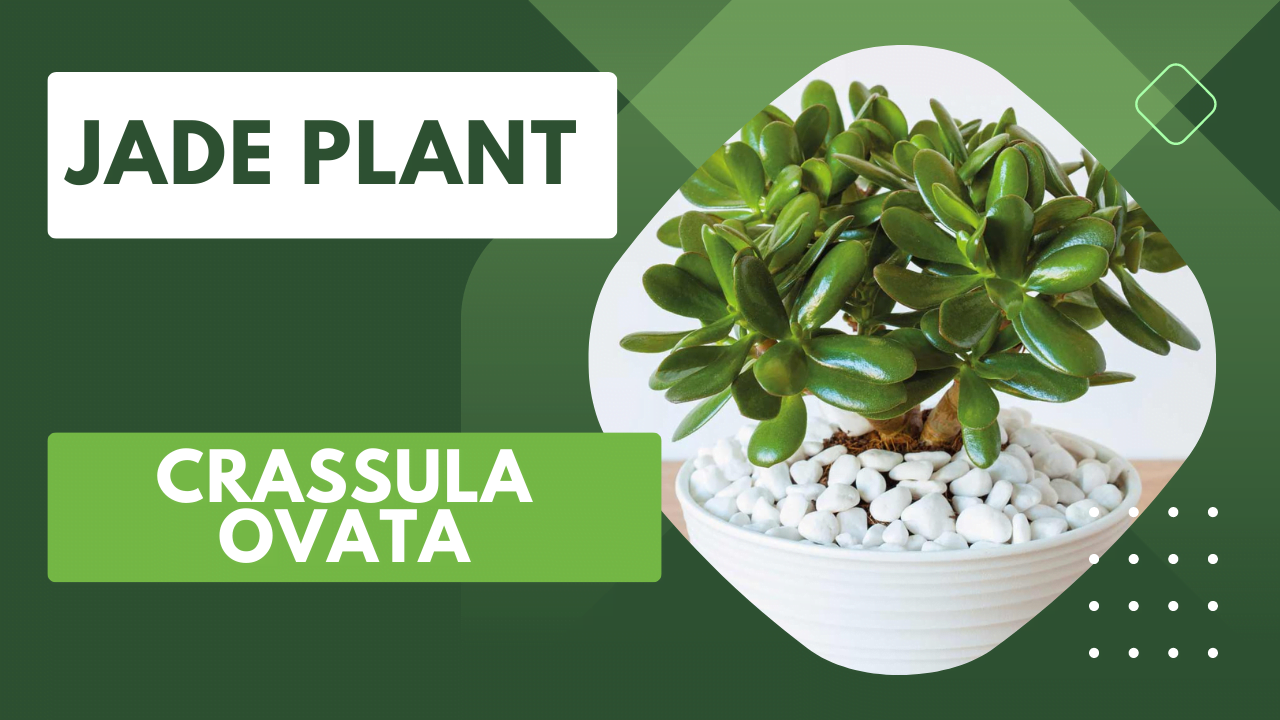How To Save a Dying Tulsi Plant, What are the signs of a Dying, Why are Tulsi leaves falling OFF, Save or Take Care in Winter or Summer, Make Feel Better, Stages of Growth, types, 15 Benefits, Pests Affecting Tulasi and How to Treat them
Tulsi, also known as Holy Basil, is a plant that people really value because it’s special and can help with health. But sometimes, taking care of it can be tricky. If you see your Tulsi plant looking sad and not doing well, don’t worry. In this easy-to-follow guide, we’ll tell you how to know if your Tulsi is in trouble, why it might be having problems, and how to help it feel better in different seasons. We’ll also talk about the different stages of Tulsi’s growth and why it’s so great.
You can also read about How to Grow and Care for the Curry Leaf Plant

What are the signs of a Dying Tulsi Plant
First, let’s learn how to tell if your Tulsi plant is not happy:
- Yellow Leaves: If the leaves turn yellow, it could be because you’re giving it too much water, the soil doesn’t drain well, or it needs more nutrients.
- Droopy Leaves: When the leaves look sad and droop down, it might mean you’re either watering it too much or not enough.
- Bugs: Check if there are any tiny bugs on the plant. Things like aphids and mealybugs can hurt your Tulsi.
- Sick-Looking Leaves and Stems: If you see mold, strange spots, or a sickly appearance on the leaves or stems, it could be a disease.
- Pot Size: Make sure the pot in your Tulsi is big enough for it. If it’s too small, the plant can’t grow properly.
Why are Tulsi leaves falling OFF?
Tulsi leaves, or Holy Basil can fall off due to various factors:
- Natural shedding is part of the plant’s growth cycle.
- Improper watering practices (overwatering or underwatering).
- Pest infestations or diseases weaken the plant.
- Environmental stressors like extreme temperatures or light changes.
- Nutrient deficiencies, particularly a lack of nitrogen.
- Root issues, such as rot or damage.
- Pruning activities.
- Seasonal changes.
Tulsi plant 15 benefits
Tulsi, also known as Holy Basil, is a revered plant in traditional medicine systems like Ayurveda for its numerous health benefits. Here are some of the potential benefits of the Tulsi plant:
- Adaptogenic Properties: Tulsi is considered an adaptogen, which means it may help the body adapt to stress and maintain balance.
- Immune System Support: It has immunomodulatory properties that can enhance the immune system’s function, helping the body fight infections and illnesses.
- Antioxidant Effects: Tulsi is rich in antioxidants that combat oxidative stress and reduce the risk of chronic diseases.
- Anti-Inflammatory: It possesses anti-inflammatory properties, which can help reduce inflammation in the body.
- Respiratory Health: Tulsi is known for its role in relieving respiratory issues like coughs, colds, and asthma due to its bronchodilator and antimicrobial properties.
- Cardiovascular Health: Some studies suggest that Tulsi may help lower blood pressure and cholesterol levels, and reduce the risk of heart diseases.
- Stress Reduction: Tulsi’s adaptogenic properties can help reduce stress and anxiety, promoting mental well-being.
- Digestive Aid: It aids digestion, soothes gastrointestinal discomfort, and can alleviate issues like bloating and gas.
- Antimicrobial: Tulsi has natural antibacterial, antiviral, and antifungal properties that can help combat infections.
- Diabetes Management: There is some evidence to suggest that Tulsi may help regulate blood sugar levels in individuals with diabetes.
- Skin Health: Tulsi’s antimicrobial properties may be beneficial for skin conditions like acne and eczema when applied topically.
- Liver Protection: It may have hepatoprotective properties, protecting the liver from damage.
- Anti-Cancer Properties: Some research suggests that Tulsi may have anti-cancer potential due to its ability to inhibit the growth of cancer cells and protect against radiation-induced damage.
- Anti-Aging: The antioxidants in Tulsi may help slow down the aging process by combating free radicals.
- Oral Health: Chewing Tulsi leaves can promote oral hygiene by reducing bad breath and preventing gum disease.
It’s important to note that while Tulsi has many potential health benefits, it should be used as a complementary therapy and not as a replacement for conventional medical treatment when needed. Also, individual types of responses to Tulsi may vary, so it’s advisable to consult with a healthcare professional before using Tulsi for medicinal purposes, especially if you have underlying health conditions or are taking medications.
Why Is My Tulsi Plant Dying?
To help your Tulsi feel better, it’s important to know why it’s not happy. Here are some common reasons:
- Too Much Water: Tulsi likes its soil to dry out a bit before you water it again. If it’s always wet, that’s a problem. If you are confused about watering, here is a Complete Guide to watering indoor houseplants
- Not Enough Water: If you forget to water your Tulsi, it’ll be sad. It needs regular drinks.
- Bugs: Bugs can eat your Tulsi and make it sick.
- Sickness: Sometimes, plants get sick, just like people. You need to take care of it when that happens.
- Too Hot or Too Cold: Tulsi likes warm weather. If it gets too cold, it won’t be happy.
How to Save Tulsi Plant from Dying in Winter?
Winter can be really tough on Tulsi. Here’s how you can save the tulsi plant from dying in winter because it is during the cold season:
- Bring It Inside: If it’s really cold where you live, bring your Tulsi inside your home. Put it close to a window where the sun shines.
- Put Some Mulch: Cover the soil with a layer of mulch to keep it warm and cozy.
- Trim It: Cut off any parts of the plant that look sick or dead. This helps new parts grow. You can also read all the parts about plants
- You can use the artificial grow light to provide a warm environment for your plant. You can use the below grow light for Tulsi as well.
- The most important part: whether it’s summer or winter, never change the place. Keep the plant 365 days in the same place, if possible. If you use grow light try to set it in that place.
How to Save Tulsi Plant From Dying in Summer?
Summer can be too hot for Tulsi. Here’s how to help it during the hot months to save the tulsi plant from dying in summer:
- Water It Right: In the summer, Tulsi needs more water. But make sure the soil can drain so the roots don’t sit in water.
- Give It Shade: If the sun is really strong, give your Tulsi some shade during the hottest part of the day.
- Trim It Regularly: Keep your Tulsi bushy and healthy by trimming the tips of its stems.
How to Make Your Tulsi Plant Feel Better?
To help your Tulsi get better, follow these steps:
- See What’s Wrong: Find out what’s making your Tulsi unhappy, like too much water or bugs.
- Give It a New Home: If your Tulsi’s pot is too small, move it to a bigger one with good drainage.
- Cut and Prune: Trim away yellow or sick leaves and prune your Tulsi to make it grow better.
- Water Carefully: Water your Tulsi when the soil is a bit dry, and make sure the pot drains well.
- Use Fertilizer: Give it some plant food, but don’t overdo it. Once a month during the growing season is enough.
- Stop Bugs: If you see bugs, use a gentle soap or neem oil to get rid of them. You can also read about precautions from Fungus Gant
Why Tulsi Is Awesome?
Tulsi is a special plant with many benefits:
- Good for Health: Tulsi has things in it that are good for your health. People use it to treat different health problems.
- Spiritual and Sacred: Some people believe Tulsi is sacred and grow it for spiritual reasons.
- Tasty in Food: Tulsi leaves taste good and can be used in cooking.
- Relaxing Smell: Tulsi’s oil is used in aromatherapy to help you relax.
How to Take Care of Your Tulsi Plant?
To keep your Tulsi plant happy:
- Give It Sun: Tulsi likes 6-8 hours of sunlight every day, either from the sun outside or near a sunny window inside.
- Water Right: Water it when the top of the soil is dry, and make sure the water can drain away.
- Stay Warm: Protect it from frost and keep it warm, especially in winter.
- Trim It: Regularly trim it to make it grow nicely and remove sick leaves.
- Feed It Lightly: Give it a little plant food once a month during the growing season.
What are the Stages of Tulsi Plant Growth?
Tulsi goes through different stages as it grows:
- Starting Out: It begins as a small seed that sprouts, usually within 5-14 days.
- Getting Bigger: As it grows, it develops more leaves and gets stronger.
- Growing Well: It becomes bigger and bushier, making more leaves.
- Flowering Time: Tulsi plants grow pretty flowers, but many people remove them to get more leaves.
- Fully Grown: The plant gets as big as it’s supposed to and makes leaves throughout the growing season.
- Winter Sleep: In cold places, Tulsi might rest during winter.
- Coming Back: With good care, it wakes up and grows again after its rest.
How many types of Tulsi Plants?
Tulsi, or Holy Basil, holds a sacred place in many cultures for its spiritual significance and medicinal properties. There are several distinct varieties of Tulsi, each with its unique characteristics and uses. Let’s explore some popular of them briefly:
1. Krishna Tulsi (Ocimum sanctum) (Purple Leaf Tulsi)
- Features: Recognizable by its dark purple or black leaves.
- Medicinal Benefits: Known for its anti-inflammatory and antioxidant properties.
- Flavor: Offers a peppery, clove-like flavor, ideal for culinary use.
- Spiritual Significance: Highly sacred in Hinduism, used in religious ceremonies.
2. Rama Tulsi (Ocimum sanctum) (Green Leaf Tulsi)
- Features: Commonly cultivated, with green leaves and a delightful aroma.
- Medicinal Uses: Valued for its calming and stress-relieving effects.
- Flavor: Has a mild, sweet flavor, making it a preferred choice for herbal teas.
- Religious Importance: Sacred in Hinduism, used in religious rituals.
3. Vana Tulsi (Ocimum gratissimum) (Wild Tulsi)
- Features: Less common, with light green leaves and a woody stem.
- Medicinal Potency: Effective against respiratory infections, fever, and digestive issues.
- Flavor: Unique flavor combining clove-like spiciness with a hint of lemon.
- Biodiversity: Often found growing wild, contributing to biodiversity.
4. Amrita Tulsi (Ocimum sanctum or Ocimum tenuiflorum)
- Features: A hybrid variety of Rama and Krishna Tulsi.
- Balanced Medicinal Properties: Offers versatile holistic health benefits.
- Flavor Profile: Pleasant and balanced flavor suitable for teas, culinary dishes, and medicinal preparations.
- Resilience: Thrives in various conditions, making it easy to grow.
5. Kapoor Tulsi (Ocimum sanctum or Ocimum tenuiflorum) (Camphor Tulsi)
This type of tulsi has light green leaves with a camphor-like scent. It has a sweet, lemony flavor. Kapoor tulsi is said to have anti-inflammatory and antibacterial properties.
6. Marua Tulsi (Holy Basil)
This type of tulsi is native to Nepal and has a strong, minty flavor. Marua tulsi is said to be the most potent of all the tulsi varieties and is often used to treat high blood pressure, diabetes, and cancer.
Tulsi comes in various types, each with its own unique qualities. Whether you’re interested in health remedies, culinary adventures, or spiritual enrichment, exploring the diverse world of Tulsi can be a rewarding experience. These varieties all share the essence of Tulsi, symbolizing purity, health, and spiritual well-being.
Common Pests Affecting Tulasi Plant and How to Treat or Prevent
| Pest | Identification | Symptoms | Treatment |
|---|---|---|---|
| Spider Mites | Tiny, pinhead-sized pests that create small webs on your Tulasi plant | Discoloration of leaves, stunted growth, wilting in extreme cases, the presence of webs, and white dots on the leaves | Gently remove the mites and webs with cotton wool. Then, thoroughly spray your Tulasi plant with neem spray, ensuring the undersides of the leaves are well covered. Repeat this process every 3-5 days until the infestation is eliminated. |
| White Flies | Small insects, typically 1mm or smaller, that feed on the undersides of leaves | Yellowing leaves, stunted growth, and the presence of mold on the leaves | Use sticky traps to catch the flies as they fly around your plant. For enclosed grow spaces, consider introducing Encarsia bugs, which feed on whiteflies. Additionally, use neem spray, thoroughly covering the plant, and repeat the process every 3-5 days until the infestation is gone. |
| Four-Lined Plant Bug | Small beetles, measuring about 7.5mm in length and 4mm in width | Brown dot-like indents on leaves, dried leaves, and falling leaves | If you spot these bugs, remove them and then thoroughly spray your Tulasi plant with neem spray, covering both sides of the leaves. Repeat this process every 3-5 days until the infestation is eliminated. |
| Scales | Hard-bodied pests that blend in with the plant’s bark | Mold, stunted growth, yellowing leaves, and, in severe cases, wilting | In enclosed grow spaces, consider using Cryptolaemus or Metaphycus bugs to help get rid of scales. You can also use 91% isopropyl alcohol by applying it with a cotton swab to the affected areas on the stems. Ensure thorough coverage, as scales can be challenging to find. Regularly check your plant to ensure they haven’t returned. |
| Mealy Bugs | Small, soft-bodied pests that resemble cotton balls | Yellowing leaves, deformed leaves, the presence of a waxy thread trail, mold, and wilting | In enclosed grow spaces, use Cryptolaemus bugs to eliminate mealy bugs. Alternatively, thoroughly spray your Tulasi plant with neem spray and repeat the process every 3-5 days until the infestation is gone. If neem spray doesn’t work, use 91% isopropyl alcohol by applying it to the bugs with a cotton swab. |
| Leafhoppers | Slender insects, about 6mm long | White spots on leaves, curling leaves, yellowing leaves, leaf distortion, and stunted growth | Use sticky traps to catch leafhoppers as they jump around. If you spot them, relocate them outdoors and thoroughly spray your Tulasi with neem spray, covering the undersides of the leaves. Repeat this process every 3-5 days to eliminate the infestation. |
| Aphids | Small, soft-bodied insects | Mold, curling leaves, wilting, yellowing leaves, and stunted growth | In enclosed grow spaces, you can introduce Hover Flies or Aphidius bugs to get rid of aphids. Additionally, use neem spray, ensuring thorough coverage of the plant, and repeat the process every 3-5 days until the infestation is gone. |
| Thrips | Very small insects, less than 1mm | Pale leaves, silvery leaves, possible disfiguration of leaves, and wilting | Use sticky traps to catch thrips as they fly around. Thoroughly spray your Tulasi plant with neem spray, ensuring complete coverage, and repeat the process every 3-5 days until the infestation is gone. |
Conclusion
Helping your Tulsi plant feel better is all about understanding what it needs, whether it’s winter or summer. With some care and attention, your Tulsi will be happy and healthy, adding beauty to your space and offering its many benefits. Remember, a healthy Tulsi plant is not just good for your surroundings but also for your well-being.




